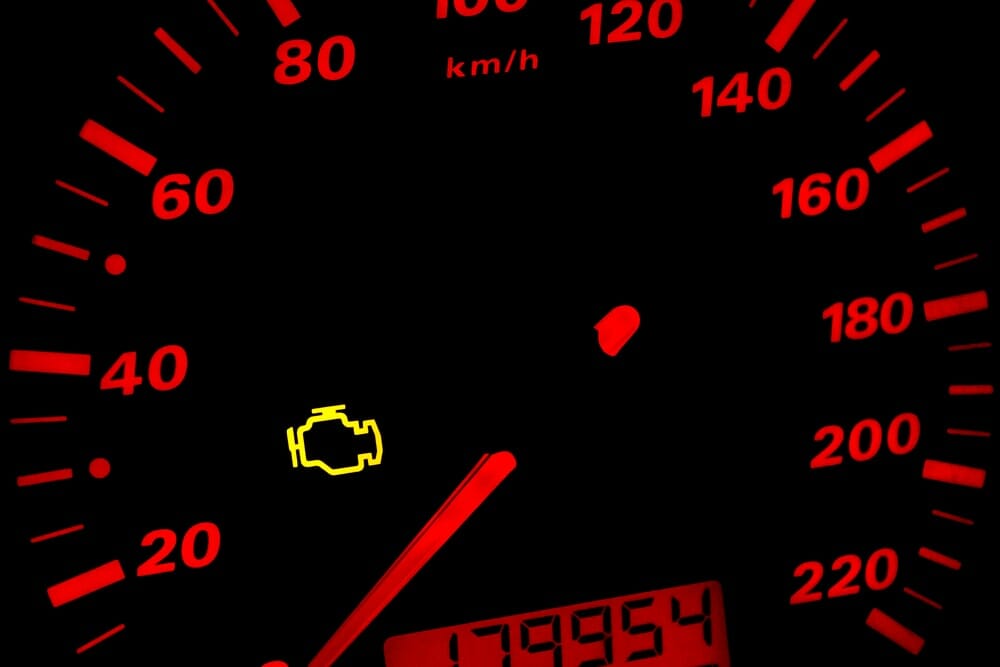For many drivers, the engine light is an enigmatic symbol of uncertainty. It illuminates on the dashboard, flashes with an almost melodic urgency, and then mysteriously extinguishes itself, leaving behind a kaleidoscope of questions. What does it signify? Should you panic or breathe a sigh of relief? In this exploration, we’ll decode the complexities behind the flashing engine light phenomenon and unveil the layers of sophistication in modern automotive diagnostics.
First and foremost, let’s dispel the notion that the engine light is merely an inconvenience—it serves as a sentinel, drawing your attention to potential issues within the intricate machinery of your automobile. Each flicker can be attributed to a variety of factors, and understanding these can reshape your perspective when that dreaded light makes an appearance.
One principal reason the engine light might flash momentarily before going out can be linked to transient issues. Modern vehicles are equipped with onboard diagnostic systems that continually monitor numerous sensors for irregularities. If a minor fluctuation occurs—like momentary misfires or brief abnormalities in fuel-to-air ratios—the engine light activates. Once the anomaly rectifies itself, the light may cease flashing. While this might provide temporary solace, consistent occurrences of this nature could foreshadow larger, underlying issues.
Think about this: your car might be trying to communicate something subtle but critical. Have you ever been in a conversation where the speaker drops an intriguing hint only to change the subject abruptly? That’s your engine light— it shimmered briefly to signal a possible threat, only to retreat back into silence. But is it wise to disregard it? Not quite.
Now, it’s essential to note that the flashing light often highlights a misfire situation. Misfires can be caused by a myriad of factors: a faulty spark plug, inadequate fuel pressure, malfunctioning sensors, or even a corroded connector. When misfires occur, unburnt fuel escapes into the exhaust system, resulting in a risk of catalytic converter damage—an expensive misadventure you would do well to sidestep.
This leads us to the oft-ignored aspect of engine light diagnostics: the importance of routine inspections. By regularly maintaining your vehicle, you can mitigate the risk of serious issues that may trigger that dreaded light. Check your oil levels, replace old spark plugs, and ensure your fuel system is clean—these proactive measures serve as essential preventive medicine for your engine.
Now, let’s tackle the intriguing facet of why the engine light might cease its flashing as quickly as it started. Imagine your engine light dances to the rhythm of your vehicle’s performance; when the parameters drift back into alignment, the light’s performance mellows out. Some vehicles incorporate ‘self-correcting’ capabilities, where the system attempts to rectify minor discrepancies autonomously. This could explain the light’s temporary disappearance after a brief illumination.
However, this invites another crucial question: when should you be genuinely concerned? If the light resumes its flashing pattern or reappears once you’ve reset the scenario, it suggests an underlying issue cannot be easily brushed aside. Excessive misfires, fuel delivery problems, or fault codes that persist indicate a greater need for attention. Remember, a flashing engine light—a flicker of warning—is a clarion call for action, not merely a benign notification.
Moreover, let’s illuminate the subject of diagnostic codes. When the engine light illuminates, it triggers your vehicle’s onboard diagnostic system to record a fault code. With OBD-II scanners readily available, even the non-mechanically inclined driver can ascertain why that light flickered. A plethora of online resources can assist you in deciphering these codes; they can unveil a narrative about your vehicle’s health. This newfound literacy in automotive terminology transforms you from merely a vehicle operator into an informed vehicle steward.
Let’s not forget another intriguing motivator: the interplay of technological advancements and your daily drive. Today’s vehicles are marvels of engineering prowess, and their diagnostic systems signify just that. When that engine light flashes, it prompts a moment of introspection, a blending of man and machine. Through understanding, you nurture a symbiotic relationship with your automobile, fostering respect and care rather than fear.
Ultimately, a flashing engine light doesn’t need to invoke anxiety. Instead, it beckons you to embrace curiosity and engage with your automobile at a deeper level. By approaching it with a versatile mindset, you’ll develop insights that extend beyond mere vehicle operation. You’ll appreciate the nuances of what it means to own, maintain, and truly understand your vehicle.
In summary, when your engine light winks in and out of existence, consider it an invitation to investigate the outer layers of your automotive experience. Embrace the perspective shift that transitions the engine light from an ominous threat to a fascinating aspect of vehicle ownership. Whether it’s a transient glitch, a fleeting misfire, or something more fundamental, your journey into unlocking the mysteries of your engine light is just beginning. The road ahead is waiting, and so is the opportunity for a deeper connection with your vehicle.
